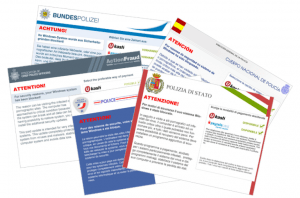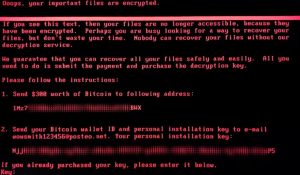Ransomware Attack : A Real Threat To Your Data And Money
- August 25, 2019
- Posted by: Softvity
- Category: Economics

We all are not aware of ransomware attacks, these may cause serious problems for your computer system and business. So we will discuss in this post, about what is ransomware, how it can affect your system and how to prevent from them without paying money.
Recently it is witnessed that, viruses and malware will not only cost you time but a lot of money too. For common people, Most of the files we store on our hard drives may be not as important that we can go an extent of paying money to get our data back. But some data are important.
The data of the corporate, business means to them a lot. And if those data are somehow compromised, can cause serious problems.
Let’s discuss, what is it and how can we prevent us from ransomware attacks.
What ransomware exactly is?
Ransomware is a kind of malware or malicious software designed to block access to your computer for the money. Recently attacking cyber world that encrypts your file and attacker demands ransom (a sum of money demanded or paid for the release of a captive) to decrypt your files.
In this way the owner loses the access to his files, however the files remain present on the owner system but it’s not readable, the encryption process transforms the contents of files to some other unreadable, jumbled data.
Types of Ransomware
According to Symantec (A global Leader in Cyber Security), Two Major types of ransomware have been seen.
1. Lockers Ransomware
2. Crypto Ransomware
1. Lockers Ransomware: These viruses generally don’t let you log in to your computer or mobile device, even they overlay your web browser and display a message like you have done some crime, that’s why you have been blocked from accessing the internet or your PC or mobile device. And to unlock the screen they demand some money.
In these tests, user files remain untouched, but this totally depends on the attacker, how they have designed the malware. But it’s been seen that in these virus files are not touched.
These messages seem legitimate and it’s very difficult for the common people to understand what has gone wrong. Some people indeed fall into the trap and pay the ransom. Look at the screenshot

2. Crypton Ransomware: These kinds of attack will encrypt your user files as well as system files. Encrypting system files may result in Showing lock screens during boot of your OS and when user files are encrypted whenever you try to open that file it will generally display a message to pay ransom to get the decryption key.

The appearance of Ransomware Attack:
The first ransomware appeared in 1989, according to Becker’s Hospital Review (http://www.beckershospitalreview.com/healthcare-information-technology/first-known-ransomware-attack-in-1989-also-targeted-healthcare.html), A AIDS researcher Joseph Popp, Distributed the floppies to other AIDS researcher saying that it contains computer Application related to their research field (AIDS).
But that program was a ransomware. But that first attack was very basic and later it sets the evolution of sophisticated attacks.
Recent Ransomware cases:
1. Cryptowall: This ransomware mainly targeted the US individuals and business, with lots of total $18 M. –Claims Journal
2. Tesla Crypt (2015): Loss of total worth around $70 K
3. Petya (2017): This virus seemed to be the ransomware but recent research by Kaspersky labs on Petya reveals that it is a wiper. The key generated on the victim’s computer after encryption seems to be random gibberish as said by Kaspersky labs

So, if you are infected don’t pay the ransom.
Prevention of ransomware attacks:
My best advice is to prevent yourself from downloading an email attachment and opening unknown emails if it looks suspicious and you don’t know the sender. Like Offer emails, cash prizes etc.
1. Use Genuine and well-known websites to download the legit software.
2. Use antivirus, and keep it up to date
3. If you are suspicious about running exe or any program or opening document update your antivirus program first, yes! Manually.
4. If you have some important files, then do not forget backup it to another storage or cloud.
5. If you are a technical person, keep track of your Hard Drive usage led. if it’s never idle and continuously busy for hours, there might be some malicious things going on, but it’s not always the case.
Conclusion:
So, Now you have some idea about these cyber attacks and what loses it can bring to you. Keep yourself updated about these attacks and what are prevention measures, for no data and money loss. We provide best web development support and mobile development services and support for you, contact us if you have something to build.
Tell your friends and colleagues about these threats if they are unaware of it, it can save their money and their data.
If you have any questions and queries in mind then ask in the comment section.
